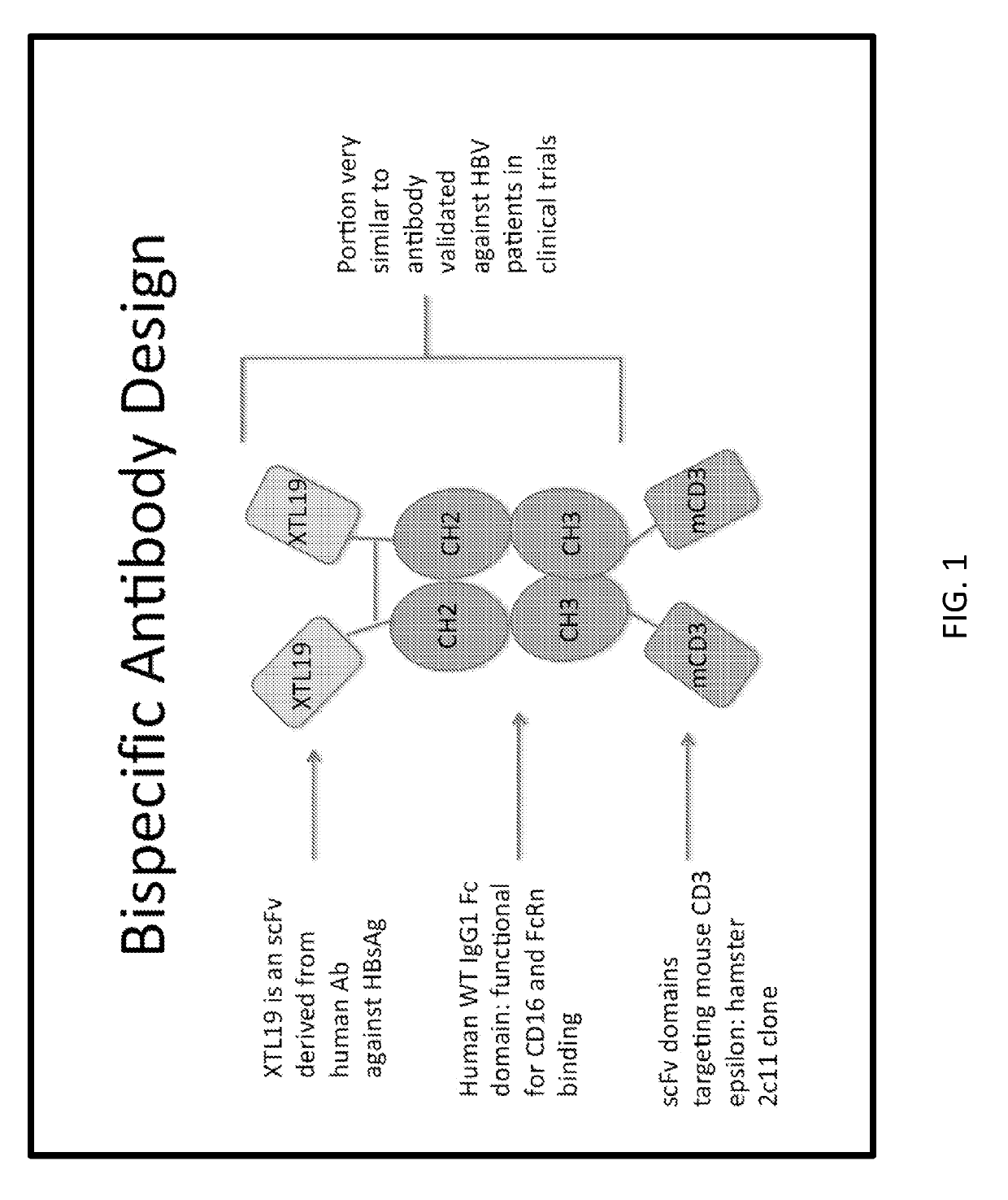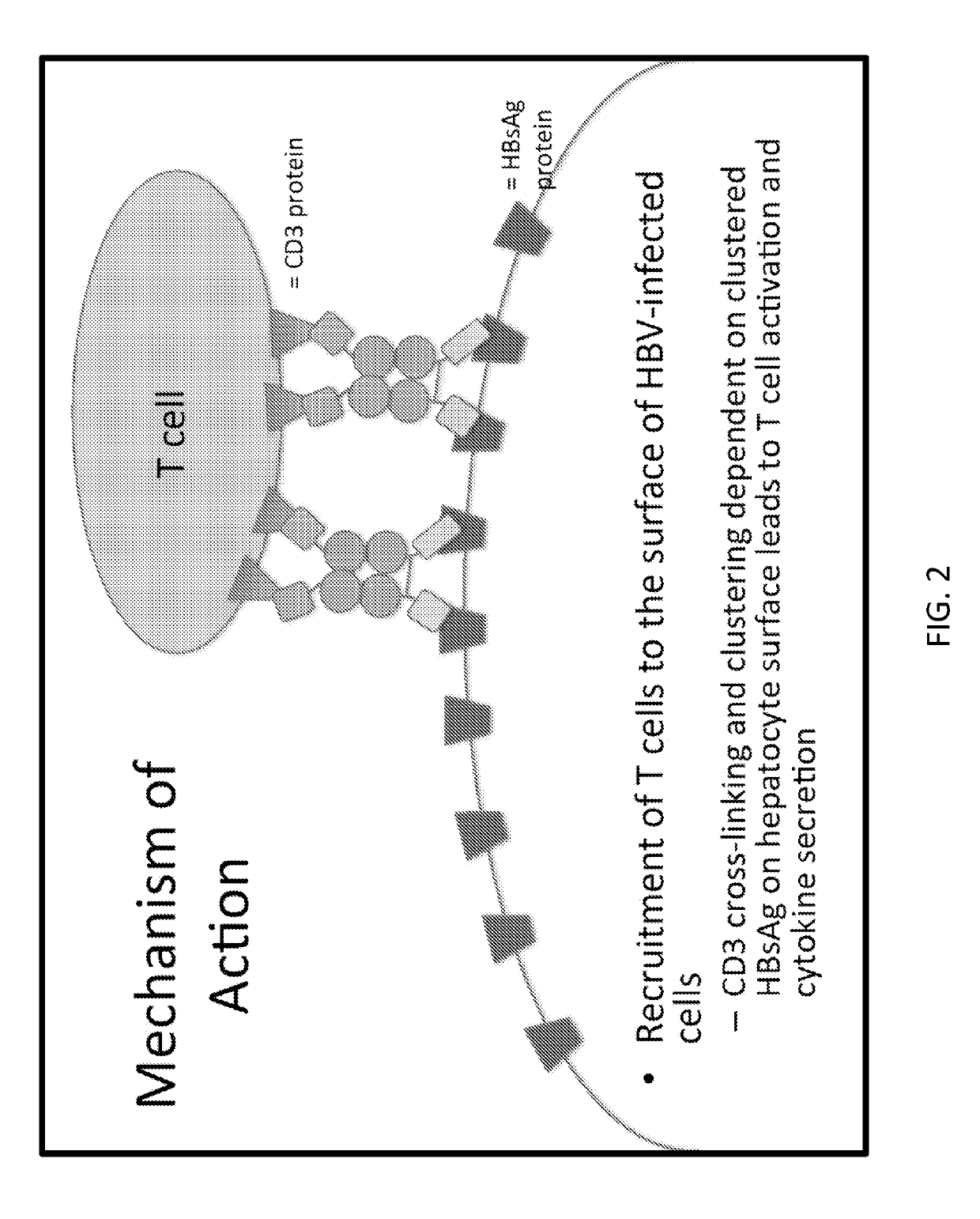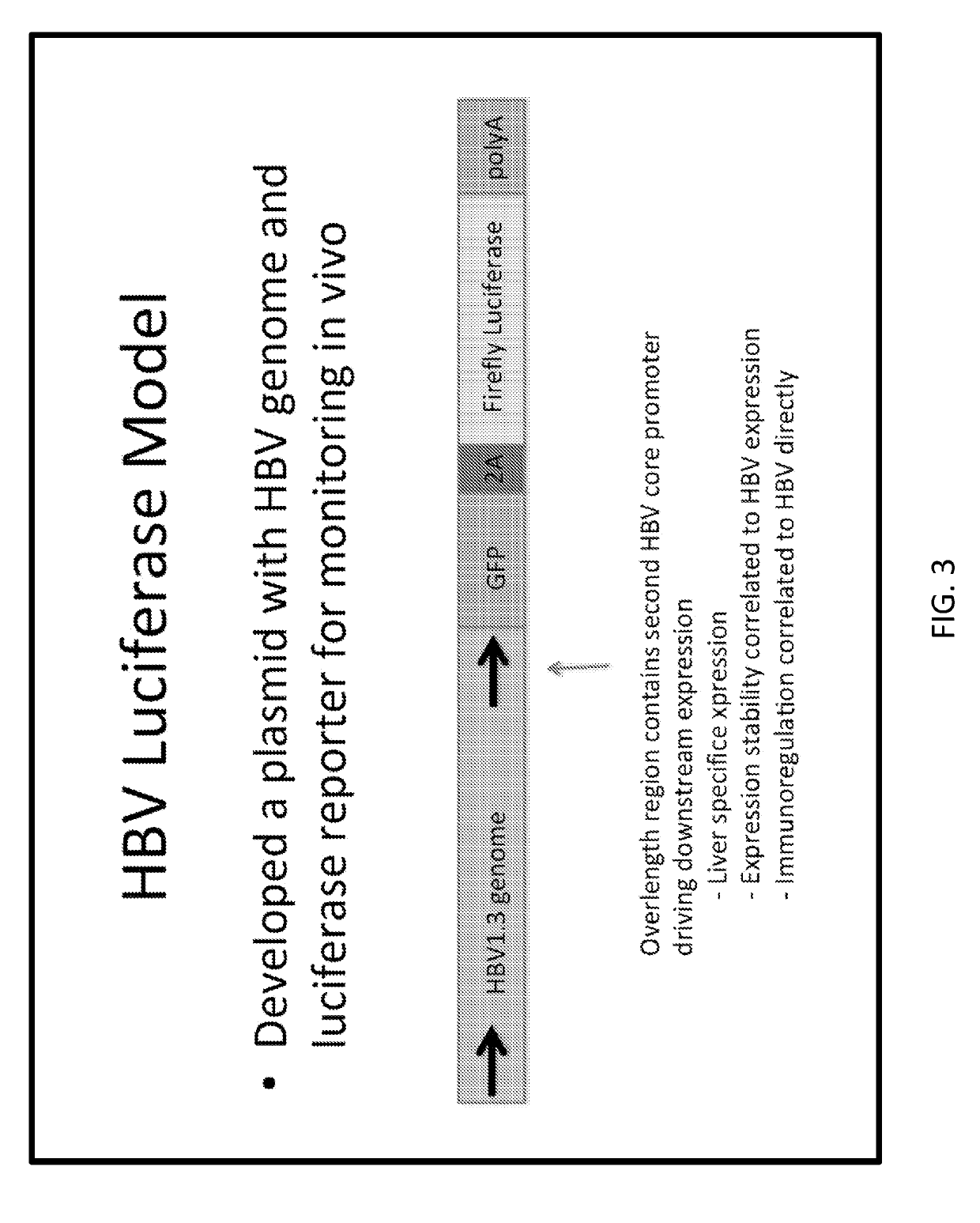Antibody based gene therapy with tissue-directed expression
a gene therapy and tissue technology, applied in the field of immunology, cell biology, molecular biology, medicine, can solve the problems of limited dosing, lack of persistence, and significant toxicities of therapies, and achieve the effects of preventing immune activation, reliable pharmacokinetics, and increasing stability
- Summary
- Abstract
- Description
- Claims
- Application Information
AI Technical Summary
Benefits of technology
Problems solved by technology
Method used
Image
Examples
example 1
[0222]A cartoon schematic of a single bispecific antibody design is illustrated in FIG. 1. In this example, the n-terminal end possesses an scFv XTL19 or 19 targeting HBsAg, the linker region is an Fc domain derived from human IgG1, and the c-terminal domain harbors an scFv against mouse CD3, in order to facilitate testing in mouse models. The recombinant protein would then be delivered for expression by gene therapy into the liver. An example of a mechanism for how such bispecific molecules function is shown in FIG. 2, wherein the molecules connect an antigen target (here HBsAg on cell surface) to T cells via CD3 binding (could be other cell types in other embodiments) leading to the clustering of CD3 molecules together resulting in T cell signaling and activation. In the testing system in mouse models, the inventors employed co-delivery of plasmid encoding target (HBV) plus luciferase reporter (see FIG. 3 for an example) and a plasmid encoding the bispecific antibody therapy under...
example 2
Hepatic Gene Therapy Expressing Bispecific Antibodies Redirects T Cells to Mediate Potent Antiviral Responses Against Hepatitis B Virus
[0225]Novel therapies against hepatitis B virus (HBV) are needed to cure virus from patients, which cannot currently be achieved by drugs today. T cell responses clear HBV in acute infection, and adoptive transfer of antiviral T cells can lead to significant reductions in vivo. Seeking more scalable methods to harness T cells against HBV, the inventors developed a novel method of activating host T cells in situ in the liver for HBV therapy. Genes for bispecific antibodies binding to HBsAg and CD3 epsilon were delivered directly into the liver by hydrodynamic tail vein injection, where after they found murine T cells mediated multi-log reduction in HBsAg and reporter gene expression within 1 day. In situ expressed bispecific antibodies were prone to antigen-independent T cell activation in the liver microenvironment, affording resistance to potential ...
example 3
In-Situ Liver Expression of HBsAg / CD3-Bispecific Antibodies for HBV Immunotherapy
[0257]Hepatitis B virus (HBV) is a partially double stranded DNA virus with tropism to the liver, infecting over 300 million people chronically worldwide, causing cirrhosis and liver cancer in a significant number of these patients (E1-Serag, et al., 2012). Once infected, very few HBV patients develop antibodies against and clear hepatitis B surface antigen (HBsAg), which serves a clinical biomarker for functional cure (Liu, et al., 2010). There is no effective treatment for chronic HBV patients; a five year treatment course with entecavir, a reverse transcriptase inhibitor, results in HBsAg seroconversion in only 1.4% of patients (Chang, et al., 2010). These antiviral inhibitors suppress serum HBV DNA levels, but have no effect on covalently closed circular DNA (cccDNA), the episomal transcriptional template of HBV. This molecule is very stable once formed in the hepatocyte, and cccDNA has been shown t...
PUM
| Property | Measurement | Unit |
|---|---|---|
| time | aaaaa | aaaaa |
| time | aaaaa | aaaaa |
| time | aaaaa | aaaaa |
Abstract
Description
Claims
Application Information
 Login to View More
Login to View More - R&D
- Intellectual Property
- Life Sciences
- Materials
- Tech Scout
- Unparalleled Data Quality
- Higher Quality Content
- 60% Fewer Hallucinations
Browse by: Latest US Patents, China's latest patents, Technical Efficacy Thesaurus, Application Domain, Technology Topic, Popular Technical Reports.
© 2025 PatSnap. All rights reserved.Legal|Privacy policy|Modern Slavery Act Transparency Statement|Sitemap|About US| Contact US: help@patsnap.com



